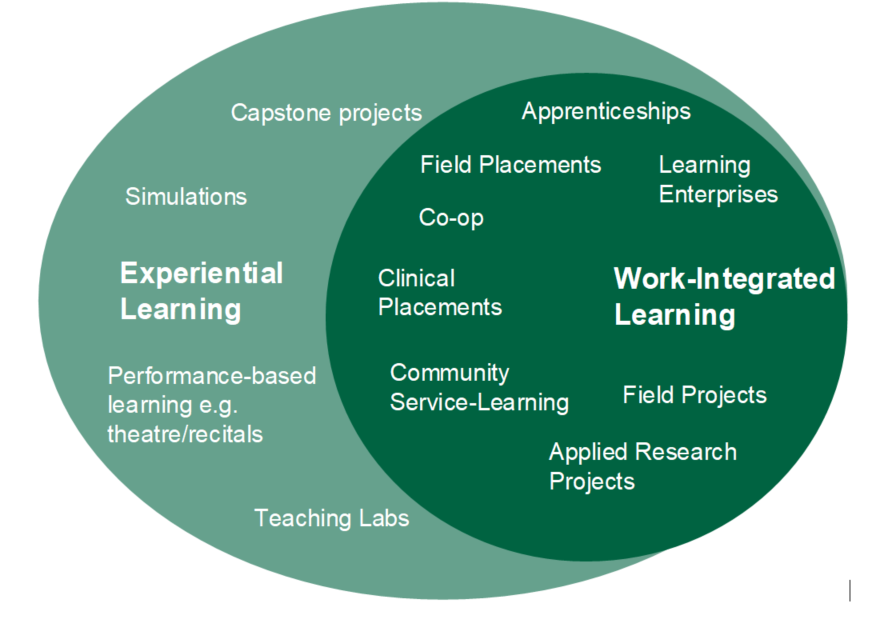Work-Integrated and Experiential Learning
Although work-integrated and experiential learning are often used interchangeably, there are distinct differences with experiential learning representing a boarder subset of learning experiences that include simulated activities and projects and work-integrated learning referring to more specific experience with employers and/or clients. The diagram below depicts the relationship between experiential and work-integrated learning.

“There are many kids of experiential learning, including what is referred to as work-integrated learning. Experiential learning incorporates work-integrated learning but is broader in its recognition of how educational experience can prepare students to thrive in the workforce.” (Ministry of Training Colleges and Universities, 2017)
Work-integrated learning is a model and process of curricular experiential education which formally and intentionally integrates a student’s academic studies within a workplace or practice setting. WIL experiences include an engaged partnership of at least: an academic institution, a host organization and a student. WIL can occur at the course or program level and includes the development of learning outcomes related to employability, personal agency and life-long learning. (CEWIL, 2018)
Guiding Principles for Experiential Learning
The Ministry of Training Colleges and Universities developed four guiding principles for experiential learning:
- Postsecondary Supported; Workplace Linked
- Meaningful, Structured and Verified
- Compliant with Employment Laws
- Recognition
The following checklist was designed to help apply the principles.
Experiential Learning Checklist